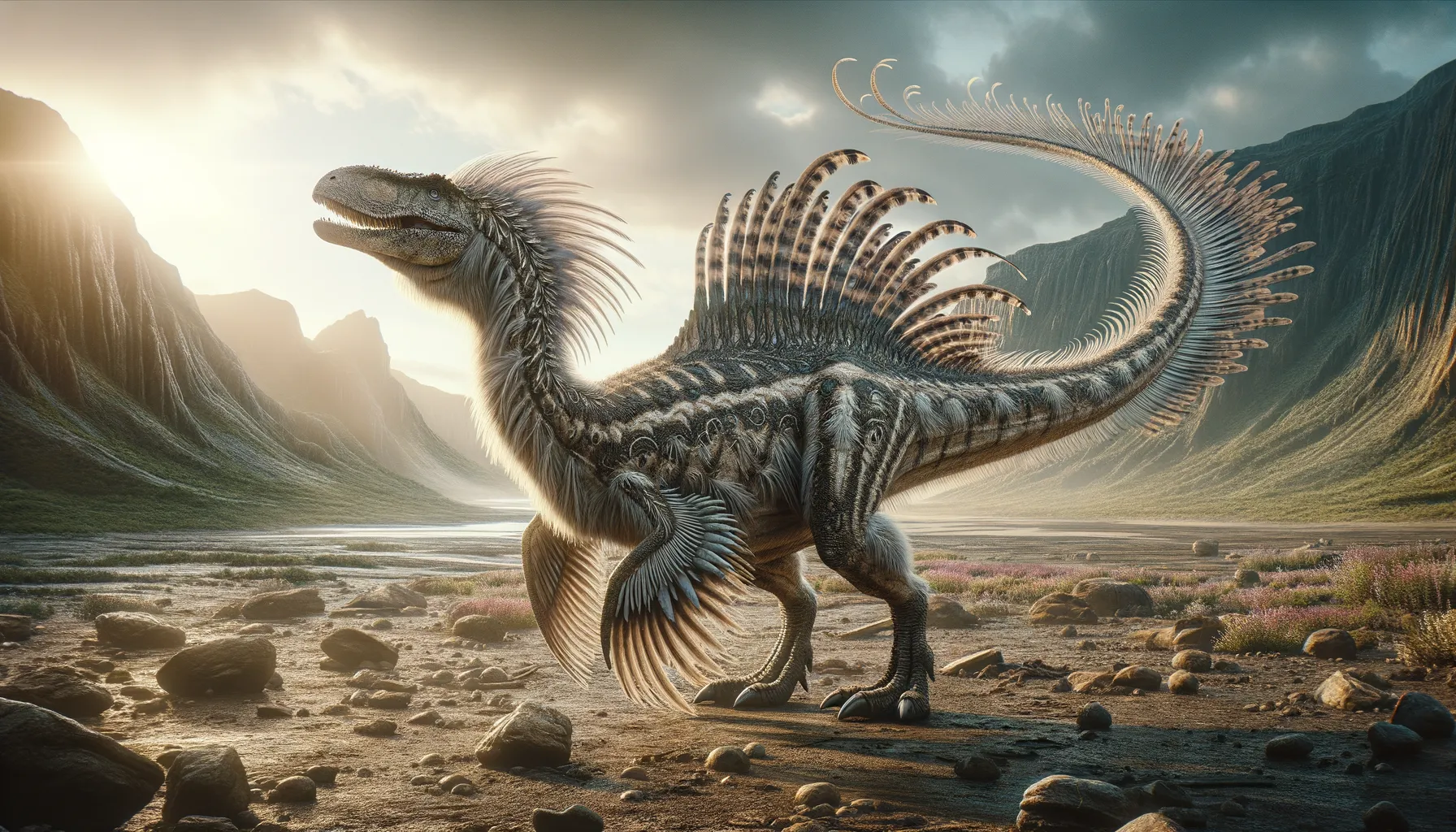
Tianyulong
A fluffy glimpse into dinosaur evolution.
Period
Cretaceous
Length
Roughly 0.7 meters long.
Height
About 0.2 meters at the hip.
Weight
Approximately 1.5 kilograms.
Tianyulong is a fascinating dinosaur known for its unique integument, which includes feather-like structures. Belonging to the Jurassic period, it challenges the traditional view of dinosaur skin and appearance. This small, bipedal dinosaur exhibits characteristics that suggest a complex evolutionary lineage. Its discovery enhanced our understanding of how integumentary structures might have evolved among certain dinosaur species, shedding light on the possible origins of feathers.
Diet
Tianyulong was likely herbivorous, primarily consuming plants. Its small stature and tooth structure suggest it fed on low-lying vegetation, avoiding hard or tough plant materials.
Hunting
Being an herbivore, Tianyulong did not hunt for prey. It would have used its nimble feet to quickly dash through the underbrush, avoiding predators rather than pursuing prey.
Environmental challenges
Tianyulong faced numerous challenges from the Cretaceous environment. With climate fluctuations, it had to adapt to variable temperatures. Sparse vegetation in some areas required it to cover larger grounds in search of food. Furthermore, the presence of large predators meant it needed effective escape tactics for survival.
Speed
Moderate, suited for quick bursts.
Lifespan
Estimated to be around 10 to 20 years.
First discovery
Discovered in Liaoning, China in 2009.
Fun Facts
- Tianyulong was a small, feathered dinosaur that lived during the Late Jurassic period, about 160 million years ago.
- Despite its small size, Tianyulong was an important discovery because it provided evidence that some plant-eating dinosaurs also had feathers or feather-like structures.
- This dinosaur belonged to a group known as heterodontosaurs, which had different types of teeth, suggesting a varied diet.
- Tianyulong fossils were first discovered in northeastern China, a hotspot for significant dinosaur discoveries with well-preserved specimens.
- The name 'Tianyulong' means 'dragon from Tianyu,' a reference to the region in China where it was found.
- One of the fascinating aspects of Tianyulong is its long, filamentous structures, resembling primitive feathers, showcasing that feathers might have appeared much earlier in dinosaur evolution than previously thought.
- Unlike many other feathered dinosaurs that were closely related to birds, Tianyulong was a distant relative, indicating that feather-like structures evolved more than once.
Growth and Development
Tianyulong likely experienced rapid growth during its early years to quickly reach maturity, providing a better chance of evading predators. The feather-like structures might have played a role in temperature regulation during their growth. Juveniles possibly stayed near protective underbrush until they grew sufficiently large to evade predators.
Habitat
Tianyulong inhabited what is now northeastern China, thriving in a forested environment. The terrain provided plenty of low vegetation, ideal for foraging. Warm climate and seasonal rains would have supported dense plant life vital for its sustenance, although it could encounter competition with other herbivores.
Interaction with other species
Tianyulong coexisted with both herbivorous contemporaries and formidable carnivores. Its ability to escape into dense foliage was crucial in avoiding becoming prey. Fossil evidence suggests it might have formed small groups to increase chances of survival against predators.
Natural lifespan
In the wild, Tianyulong could live up to 20 years under optimal conditions.
Reproduction
Tianyulong was probably oviparous, laying eggs in small nests. Parental care might have been minimal, with hatchlings being precocial and ready to fend for themselves early.
Social behaviour
Tianyulong might have displayed some social behavior, possibly forming small groups for protection. If threatened, the group could scatter, confusing predators and increasing individual survival chances.
Fossil locations
Fossils of Tianyulong have primarily been found in the Liaoning Province of China. The region is well-known for its numerous important fossil beds, providing extensive insights into the life that thrived during the Cretaceous period.
